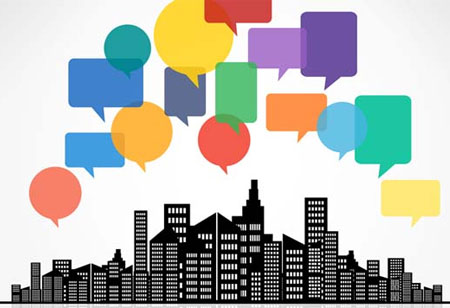THANK YOU FOR SUBSCRIBING
Be first to read the latest tech news, Industry Leader's Insights, and CIO interviews of medium and large enterprises exclusively from Gov CIO Outlook
THANK YOU FOR SUBSCRIBING

By
Government CIO Outlook | Tuesday, February 05, 2019
Stay ahead of the industry with exclusive feature stories on the top companies, expert insights and the latest news delivered straight to your inbox. Subscribe today.
In order to improve the quality of life and provide a sustainable environment for citizens, the smart cities are important. A smart city is capable of making traditional networks and services more efficient with the use of digital and telecommunication technologies, with an emphasis on IoT and big data.
The smart city concept integrates multiple Information and Communication Technology (ICT) solutions in a secure way to manage a city’s assets. A city’s assets include transportation systems, waste management, water management, safety systems, the local department’s information systems, and data management as well. Message Queuing Telemetry Transport (MQTT) is designed to meet the challenges of connecting sensors, actuators, and phones with established software processing technologies to the rapidly growing physical world. The Constrained Application Protocol (CoAP) is a specialized web transfer protocol which can be used with restricted IoT nodes and networks. The protocol is designed for machine-to-machine applications like smart energy and automation building.
As smart city projects deal with enormous data to be processed and analyzed, the role of big data is of utmost importance. A large amount of data will require processing in real time. Furthermore, data sources are highly heterogeneous, and data must be systematized, unified, and adapted for further use. IoT helps to connect different sensors across the city which helps to reduce the number of resources and maintenance cost. Sensors are integrated into traffic lights, public transport vehicles, telephone booths, and measure traffic intensity, air quality, and pollution. Data lake stores data and advanced analytics are used to match data from different sources and build knowledge, draw conclusions and predictions on various topics such as road optimization and mobility, public security, innovative pricing models for marketing agencies, and advertisers based on crowd and target group movements. The smart city solutions can also provide utility management services to citizens that help them to track and control the utility usage on the go using the smart meters.
As smart cities develop and grow in number in the coming years, IoT and big data play a significant role in developing and integrating the services and infrastructure. The city planners will greatly benefit from IoT and big data technologies in city infrastructure planning and developing. There is no doubt that the smart cities will be a hub of innovation and provide the citizens a standard life experience in the coming days.
I agree We use cookies on this website to enhance your user experience. By clicking any link on this page you are giving your consent for us to set cookies. More info

However, if you would like to share the information in this article, you may use the link below:
www.govciooutlookapac.com/news/making-cities-smarter-with-iot-and-big-data-nid-441.html



